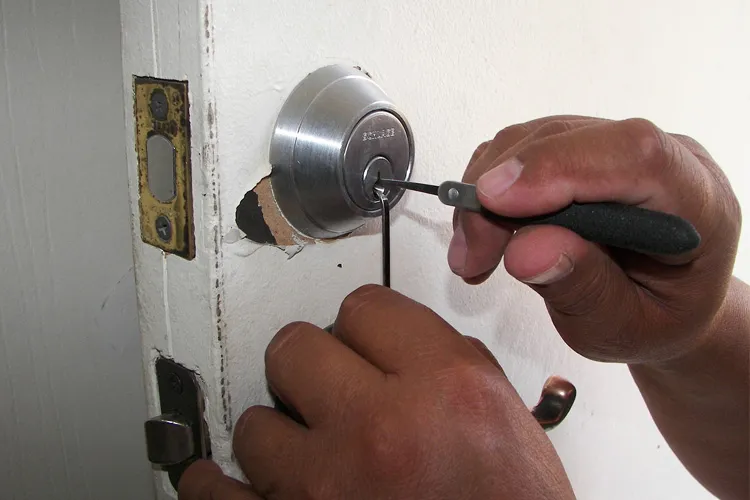
Understanding and Preventing Lock Bumping
When it comes to keeping our homes and businesses secure, the importance of a good lock cannot be overstated. We all want to feel safe, knowing that our locks are doing their job to protect our property and loved ones. However, there’s a sneaky trick that burglars use called lock bumping, and it’s something we should all be aware of. In this article, we’ll delve into what lock bumping is, why it’s a threat, and what we can do to prevent it. If you’re looking for tips from a trusted locksmith Peterborough, you’re in the right place.
Table of Contents
What is Lock Bumping?
Lock bumping is a technique that burglars use to open pin tumbler locks, the kind of lock that’s found on most doors. This method isn’t new; it actually dates back to the 1920s when locksmiths developed it as a way to quickly open locks without damaging them. Over time, though, this technique fell into the wrong hands and has since become a significant concern in home security.
The reason lock bumping is so worrying is that it’s incredibly easy to learn and execute. All it takes is a bump key and a little practice. A bump key is a specially crafted key that can manipulate the pins inside the lock. With just a few taps, a thief can unlock a door in seconds. This method leaves no signs of forced entry, making it difficult to detect and even harder to prove to insurance companies, notes Campus Connection Property Management company.
According to some studies, nearly 90% of traditional locks can be vulnerable to bumping. This statistic alone highlights the importance of understanding and preventing this technique. As homeowners and business owners, knowing how to protect against lock bumping can save us from potential heartbreak and financial loss.
The Mechanics of Lock Bumping
So, how exactly does lock bumping work? Let’s break it down step-by-step. Understanding the mechanics can help us better appreciate why it’s so effective and what we can do to counter it.
Firstly, a bump key is created by taking a blank key and filing it down so that all the cuts are at the maximum depth. This allows the key to fit into the lock and interact with all the pins simultaneously. When the bump key is inserted into the lock and tapped (or bumped) with a tool like a screwdriver or a small hammer, it momentarily forces the pins inside the lock to jump. When done correctly, this action aligns the pins in the open position, allowing the lock to turn and open the door.
To visualize this, imagine the inside of a standard pin tumbler lock. There are a series of pins that need to be aligned at the shear line (the line where the plug and the cylinder meet) for the lock to turn. Normally, this is done by the ridges on your key. However, the bump key forces all the pins up and then down quickly, and if timed right, the pins will align perfectly for just a split second, enough to turn the lock.
While this might sound complex, in practice, it’s something that can be mastered relatively quickly, making it a favorite technique among those looking to bypass a lock without leaving evidence of tampering.
Vulnerability of Different Locks
Not all locks are created equal, and understanding which ones are more susceptible to bumping can help us make informed choices. The most common types of locks are pin tumbler locks, wafer locks, and disc tumbler locks.
Pin tumbler locks are the most common and, unfortunately, the most vulnerable to bumping. These are found in most residential and commercial properties. The design of these locks, with their pin and cylinder mechanism, makes them an easy target for bump keys.
Wafer locks, which are often found in cars and cabinets, use a series of flat wafers instead of pins. While these locks can also be bumped, it’s generally more challenging and less common than with pin tumbler locks.
Disc tumbler locks, also known as disc detainer locks, are typically used in high-security applications like safes and high-end bicycles. These locks are much harder to bump due to their complex mechanism, which doesn’t rely on pins that can be aligned by a bump key.
Case studies have shown that many common household locks, even those branded as high security, can be easily compromised with a bump key. This includes popular brands that many of us trust to keep our homes safe. The takeaway here is that traditional locks, especially pin tumbler locks, are highly susceptible to bumping, which is why we need to consider more advanced security measures with the help of a professional locksmith service in Peterborough.
Preventative Measures
Now that we understand the risks, let’s talk about what we can do to protect ourselves from lock bumping. Fortunately, there are several effective strategies to enhance our lock security.
Choosing Bump-Resistant Locks
One of the most straightforward solutions is to invest in bump-resistant locks. These locks are designed with features that make bumping nearly impossible. For instance, they might use pins that are not easily manipulated or include sidebars that add an extra layer of security. Some reputable brands offer bump-resistant locks that have been tested and proven to withstand bumping attempts.
Additional Security Features
Adding anti-bump pins to your existing locks can also be an effective deterrent. These specially designed pins make it much harder for a bump key to align them correctly. Another option is electronic locks, which do not use traditional pin tumbler mechanisms and are immune to bumping. These locks often use keypads, biometric scanners, or smartphone apps to grant access, offering both convenience and enhanced security.
Practical Tips for Homeowners
Regularly updating your locks is another crucial step. Over time, locks can wear down, making them easier to bump. If you’ve had the same locks for years, it might be time to consider an upgrade. Installing secondary security measures like deadbolts or security bars can provide additional protection. These measures make it more challenging for burglars to gain entry, even if they manage to bump the primary lock.
Using surveillance systems and alarm systems can also be a significant deterrent. Visible cameras and alarm signs can discourage burglars from attempting to break in. If a bumping attempt is made, an alarm can alert you and the authorities immediately, potentially catching the burglar in the act.
Professional Advice: When to Consult a Locksmith
Sometimes, the best course of action is to seek professional help. A residential locksmith or commercial locksmith can assess your current security measures and recommend the best bump-resistant solutions. They can also install high-security locks and ensure that all aspects of your entry points are secure. When facing a lock emergency, having access to an emergency locksmith services can provide peace of mind, knowing that help is available 24/7.
Conclusion
In summary, lock bumping is a serious threat to our home and business security, but it’s one we can guard against with the right knowledge and tools. Understanding how lock bumping works and knowing which locks are vulnerable is the first step. From there, investing in bump-resistant locks, adding additional security features, and consulting with a professional locksmith in Peterborough can go a long way in keeping our properties safe.
At Minute Locksmith, we’re committed to helping the Peterborough community stay secure. Whether you need residential locksmith services, commercial locksmith services, or a reliable 24-hour locksmith service, we’re here to help. Stay informed, stay vigilant, and let’s keep our homes and businesses safe from the threat of lock bumping.
Frequently Asked Questions
What is lock bumping?
Lock bumping is a technique used to open pin tumbler locks with a specially crafted bump key. It involves inserting the bump key into the lock and tapping it to align the pins momentarily, allowing the lock to turn.
How common is lock bumping? Lock bumping is quite common because it’s easy to learn and requires minimal tools. Many traditional locks are vulnerable to this technique, making it a popular method for burglars.
Can all locks be bumped? Not all locks can be bumped. Pin tumbler locks are the most susceptible, while wafer locks and disc tumbler locks are more resistant. High-security locks with special features are also designed to be bump-resistant.
How can I protect my home from lock bumping?
To protect your home, consider installing bump-resistant locks, adding secondary security measures like deadbolts, and using surveillance systems. Regularly updating your locks and consulting with a professional locksmith can also enhance your security.
When should I consult a locksmith?
You should consult a locksmith if you’re unsure about your current lock’s security, need to install high-security locks, or face a lock-related emergency. A professional can provide expert advice and services to keep your property secure.
Are electronic locks a good solution to prevent lock bumping?
Yes, electronic locks are an excellent solution because they do not use the traditional pin tumbler mechanism, making them immune to bumping. They often come with additional features like keypads, biometric scanners, or smartphone integration for added convenience and security.
What should I do if I suspect my lock has been bumped?
If you suspect your lock has been bumped, it’s essential to contact a locksmith in Peterborough immediately. They can inspect the lock for signs of tampering, replace it with a more secure option, and advise on additional security measures to prevent future incidents.
How can I tell if my lock is bump-resistant?
To determine if your lock is bump-resistant, check the manufacturer’s specifications or consult a professional locksmith. Many bump-resistant locks will be labeled as such and may include features like specialized pins or sidebars that prevent bumping.
What is the difference between bump-resistant and bump-proof locks?
Bump-resistant locks are designed to make bumping very difficult, but not necessarily impossible. Bump-proof locks, on the other hand, are typically electronic or high-security locks that are entirely immune to bumping due to their design and mechanism.








